EMOTIONSREGULATOR
Instant Housing LAB/400
Instant Housing LAB /900
Rough Sleepers / Tower
Rough Sleepers / Occupied Wall Space
Urban Nomads Dresscode – Clothes and Items of Equipment for the Homeless and Other Urban Nomads
In addition to new forms of living and working, the mobile existence of modern urban nomads also demands clothing and equipment suitable for such a way of life. The multifunctional clothing of Instant Housing Dresscode makes it possible to carry light luggage and items of equipment directly on the body – it is therefore fitted to a life on the street. The initial design of the protective suits and capes is gender-neutral and functionally open, but they can be individualized via modular construction to suit each person’s environment and associated means of livelihood (e. g. bottle collectors, dumpster divers). At the same time, Instant Housing Dresscode plays with the sign system of non-verbal communication, which issues information via our clothing. If everyone had to wear the same protective clothing and face the same extreme circumstances in life – at least, this is the theoretical assumption – the clothes would also have to be charged with codes so that personal identity, for example, could become clear, or so that it would be possible to disclose hierarchical power structures. In Instant Housing Dresscode, the classical notion of “clothes make the man” is countermanded and the schematic system of signs in modern society is thrown into question.
Instant Housing Dresscode – Kleidung und Ausrüstungsgegenstände für Obdachlose und andere urbane Nomaden
Neben neuen Wohn- und Arbeitsformen erfordert die mobile Existenz der modernen urbanen Nomaden auch eine für diese Lebensweise geeignete Kleidung und Ausrüstung. Die multifunktionale Kleidung von Instant Housing Dresscode ermöglicht, leichtes Gepäck und Ausrüstungsgegenstände direkt am Körper zu tragen und ist damit dem Leben auf der Straße angepasst. Die Schutzanzüge und -hauben sind zunächst geschlechts- und funktionsneutral gestaltet, können aber durch den modulhaften Aufbau spezifisch für das jeweilige Lebensumfeld und der damit verbundene Existenzsicherung (z. B. Flaschensammler, Mülltaucher) individualisiert werden. Gleichzeitig spielt Instant Housing Dresscode mit dem Zeichensystem nonverbaler Kommunikation, das Information über die Kleidung sendet. Wenn alle die gleiche Schutzkleidung tragen müssten und denselben Lebensumständen in Extremform unterliegen würden, so die theoretische Annahme, muss auch die Kleidung mit Codes aufgeladen werden, damit beispielsweise die eigene Identität deutlich werden kann oder auch hierarchische Machtstrukturen aufzeigt werden können. Das klassische „Kleider machen Leute“ wird in Instant Housing Dresscode konterkariert und das schematisierte Zeichensystemen in der modernen Gesellschaft hinterfragt.
Instant Cooking Grillwalker-SK
Instant Cooking Grillwalker-KR
Urban Nomads Shopping Cart
Urban Nomads Dresscode
Instant Housing
Instant Housing – Housing Systems for the Homeless and Other Urban Nomads
Mobile society, mobile housing – the housing system Instant Housing is directed towards the special situation and needs of each of its users. There are various versions of Instant Housing for the differing climatic conditions of distinct locations (mosquito net, rain tarpaulin) as well as variable possibilities for mobility. The basic model of each construction series, reduced to the essentials, serves as a place to sleep. It can be modified according to the occupant’s particular situation by means of individual additional fittings, e.g. with a network connection and self-sufficient energy supply, painting in diverse colours, with a double bed, or as a family or even luxury version. One should bear in mind that this emergency, transitional accommodation optimized with regard to space and mobility should be understood as a temporary solution only. In a quick and practical way, Instant Housing offers a place to stay for people, who – above all – are the victims of diverse social changes; but it also helps modern working nomads, for example, who are expected to show permanent spatial and temporal flexibility due to their jobs. Despite its suitability in an everyday context, the housing space for urban nomads also constitutes an art space; its sculptural-functional character draws attention to changes in our post-modern, mobile society. What do a roof over one’s head, shelter, home, housing and living mean today, and what will they mean in the future? The project Instant Housing is located between material functionality and an artistic concept that responds flexibly to a changing, more mobile society with its spectrum of demands, and visualizes all this in an exemplary way with its many different models.
Instant Housing Shopping Cart
Instant Housing WBF
Instant Housing WBF - Special Edition
Instant Housing H-Klasse, H3
Instant Housing H-Klasse, H4
Instant Housing WBF-Family
Insant Housing WBF-240-Bike
Barrier Bench
Rough Sleepers / Cageman
Instant Housing Suitcase
2010 Instant Housing Cabin Cruiser
Instant Housing Shelter
Instant Housing Refugium
Instant Housing Trailer 7000
Instant Housing Trailer 4000
Instant Exhibition
Instant Exhibition – Nomadic, Mobile Exhibition Systems
The borders between private and public space are regularly plumbed in the art context. Instant Exhibition (i-ex) is a mobile exhibition system, which makes living spaces and presentation areas available for products of all kinds; it is specifically directed towards artists and other modern urban nomads who wish – in the widest sense – for an exhibition or working situation independent of any temporal and institutional framework. Here, it is possible to live and work in a completely new context. The modules, built on the basis of an Instant Housing container, are conceived functionally but can be individualised in a variable manner. The materials used are hard-wearing. Instant Exhibition accesses new presentation areas and therefore reaches a completely different type of public without the necessity to charge for entrance or impose other fees to finance a complicated infrastructure. The system is suitable for both artists in search of a minimal space to live, work and exhibit, and as an additional exhibition space and possibility for institutions that wish to abandon the concept of the neutral, white cube presentation space. In addition, Instant Exhibition creates exhibition situations quickly and in guerrilla-like fashion, so that works of fine art can be presented temporarily. Therefore it offers an opportunity to react to existing situations or events in a flexible way and without involving too much effort.
Instant Exhibition i-ex WBF
Instant Exhibition, i-ex Trailer
Instant Cooking / Instant Help
Instant Cooking – Nomadic, Mobile Cooking Stations
Instant Cooking is a project of mobile cooking stations, again reduced to the bare essentials. Functional and transportable like a field kitchen, but also formally attractive like the mobile variant of a futurist singles kitchenette where the preparation of food is celebrated in cult fashion, Instant Cooking fulfils a range of tasks. After all, cooking and eating (together) do not just serve a basic need but are also sensually, emotionally charged processes; Instant Cooking underlines this further through interaction in public space. Not least, the striking number of TV formats concerned with cooking is an indication of the topic’s significance for modern man. The mobile cooking stations are fully suited to everyday use, designed to save space, and consist of high-quality, hard-wearing materials. Due to their modular construction method, units of different sizes can be combined for any specific occasion, and supplemented by sanitary stations. The size, model (cook shop, vendor’s tray, provisions rucksack) and equipment of the cooking stations are variable, depending on the wishes, creativity and initiative of their operators, to whom the Instant Cooking Service (ICS) is also offered as support for those setting up in business. Instant Cooking Service makes a number of Instant Cooking stations available, and takes care of their administration, possible conversion, maintenance and return. In addition, it provides support in a search for office and storage space, helps with applications for permits etc. including the necessary visits to public offices and departments, with the search for a suitable location, and with advance buying and product selection. When founding local networks, those setting up in business can also get help towards self-help from the Instant Cooking Service. Instant Cooking consciously chooses the path of artistic intervention with this service, in order to give youth groups, for example, or the socially weak a possibility to change their own situation.
nstant Help – Medical Care for the Homeless
Instant Help is an artistic, social intervention for the provision of basic medical care for the homeless and other urban nomads. The necessary equipment for basic medical care is accommodated in mobile, wheeled containers easily pushed and operated by a single person. The containers are constructed so that they can stand up to any demands made upon them during everyday use and can also be taken into places that are not easily accessible. Instant Help offers the instruments with which to fight a lack of medical provision and care for the homeless, guaranteeing medical treatment for those in need of assistance. The basic idea behind this concept is treatment on the spot and extensive, initial medical care with the prospect of future reintegration into the regular medical care system: if the patient won’t come to the doctor, the doctor must go to the patient. Instant Help makes it possible to identify and care for those affected on the spot. Through regular contact, it may be possible to reduce inhibitions and persuade the sick person to visit a doctor or a hospital. Instant Help is a first step towards integration into a normal health and social system. In addition to trained doctors, the Instant Help project can also be attended by paramedics and medical care staff. The funding and maintenance of the project are covered by donations of money and goods from companies and sponsors, as well as a development association.
Instant Cooking
Instant Help
Urban Nomads Dresscode
Urban Nomads Shelter Wear
Urban Nomads Protective Wear
Urban Nomads Pilgrim / Walker
Mein Recht draussen auf der Straße 2012
Urban Nomads / Straßenkreuzer
Fußbad für alle
Mobiler Pflegeservice für die Füße
Mobiler Pflegeservice für Körper und Geist. Fußbad für alle ist als künstlerisches Projekt zwischen Kunst und Dienstleistung angesiedelt. Es soll der Erholung und Entspannung dienen und die Kommunikation zwischen den Nutzern fördern.
Fußbad für alle ist als künstlerisches Projekt angesiedelt zwischen Kunst und Dienstleistung.
Fußbad für alle nimmt den Benutzer als aktiven Teil des Projekte mit auf.
Fußbad für alle ist ein künstlerisches Projekt das vor allem der über die Kommunikation ihrer Nutzer funktionier
Fußbad für alle bietet Erholung und Entspannung
Fußbad für alle ist eine künstlerische Intervention im privaten wie auch im öffentlichen Bereich
Fußbad für alle ist als Einzel- oder als Gruppenanwendung denkbar
Fußbad für alle ist mobil und kann sowohl für öffentliche wie auch private Veranstaltungen gebucht werden.
Fußbad für alle kann gemietet werden.
Fußbad für alle kann als Set käuflich erworben werden



































































































































![- Urban Defense - Year 2017 – Hamburger Gitter - Barrier Bench FS4
Dimensions: closed 250 x 35 x 90 cm / open 250 x 120 x 165 cm. Material: galvanized steel mesh, Weight: 15 kg.
[Serial Nr.: 307-228-HOU-08JA]](/ib/site/documents/image/media/par80bb8782_2b25_3622_c4c2_1c9c0b275e2a_Thumb3_ff7896e0dac2988afcfeab49f30d95a4/48bd8194-6162-605a-5606-88d6bc66861f_20642f7b-fdef-fb00-009f-f770957b3c1a_cntIdImage_28eb3228e0b4e5dfc580cc4e89c23278.jpg?Width=300&Height=105&NoUpscale=0&Quality=90&Sharpen=0&Progr=1&Confirm=1)
![Urban Defense - Year 2017 – Hamburger Gitter - Barrier Bench FS4
Dimensions: closed 250 x 35 x 90 cm / open 250 x 120 x 165 cm. Material: galvanized steel mesh, Weight: 15 kg.
[Serial Nr.: 307-228-HOU-08JA]](/ib/site/documents/image/media/par80bb8782_2b25_3622_c4c2_1c9c0b275e2a_Thumb3_ff7896e0dac2988afcfeab49f30d95a4/82e15fac-e6b9-8dda-b3ec-a5212001fb3f_a7472611-9878-b058-97bc-04ea4c869157_cntIdImage_28eb3228e0b4e5dfc580cc4e89c23278.jpg?Width=300&Height=105&NoUpscale=0&Quality=90&Sharpen=0&Progr=1&Confirm=1)
![Urban Defense - Year 2017 – Hamburger Gitter - Barrier Bench FS4
Dimensions: closed 250 x 35 x 90 cm / open 250 x 120 x 165 cm. Material: galvanized steel mesh, Weight: 15 kg.
[Serial Nr.: 307-228-HOU-08JA]](/ib/site/documents/image/media/par80bb8782_2b25_3622_c4c2_1c9c0b275e2a_Thumb3_ff7896e0dac2988afcfeab49f30d95a4/fe442408-9e95-861f-7b3c-3201c318495d_4674e82c-a2fc-42fa-76a4-31fe68cc2cef_cntIdImage_28eb3228e0b4e5dfc580cc4e89c23278.jpg?Width=300&Height=105&NoUpscale=0&Quality=90&Sharpen=0&Progr=1&Confirm=1)
![Urban Defense - Year 2017 – Hamburger Gitter - Barrier Bench FS4
Dimensions: closed 250 x 35 x 90 cm / open 250 x 120 x 165 cm. Material: galvanized steel mesh, Weight: 15 kg.
[Serial Nr.: 307-228-HOU-08JA]](/ib/site/documents/image/media/par80bb8782_2b25_3622_c4c2_1c9c0b275e2a_Thumb3_ff7896e0dac2988afcfeab49f30d95a4/c8710efd-37e6-e4c5-d4be-92469b56f64b_0c6641bd-e86f-bcad-40dc-adc1e2b48d7b_cntIdImage_28eb3228e0b4e5dfc580cc4e89c23278.jpg?Width=300&Height=105&NoUpscale=0&Quality=90&Sharpen=0&Progr=1&Confirm=1)

![Urban Defense - Year 2017 – Hamburger Gitter - Barrier Bench FS4
Dimensions: closed 250 x 35 x 90 cm / open 250 x 120 x 165 cm. Material: galvanized steel mesh, Weight: 15 kg.
[Serial Nr.: 307-228-HOU-08JA]](/ib/site/documents/image/media/par80bb8782_2b25_3622_c4c2_1c9c0b275e2a_Thumb3_ff7896e0dac2988afcfeab49f30d95a4/ebe49480-ab3d-5a8c-b065-3a02a24047bf_eea47129-a2cd-d209-d6c2-fb066656af78_cntIdImage_28eb3228e0b4e5dfc580cc4e89c23278.jpg?Width=300&Height=105&NoUpscale=0&Quality=90&Sharpen=0&Progr=1&Confirm=1)
![Urban Defense - Year 2017 – Hamburger Gitter - Barrier Bench FS4
Dimensions: closed 250 x 35 x 90 cm / open 250 x 120 x 165 cm. Material: galvanized steel mesh, Weight: 15 kg.
[Serial Nr.: 307-228-HOU-08JA]](/ib/site/documents/image/media/par80bb8782_2b25_3622_c4c2_1c9c0b275e2a_Thumb3_ff7896e0dac2988afcfeab49f30d95a4/b505c9be-d292-0eb2-c1c7-3ca7cab3b53d_45d1afcc-1bd3-8e0b-5a5c-935d08b3b1ed_cntIdImage_28eb3228e0b4e5dfc580cc4e89c23278.jpg?Width=300&Height=105&NoUpscale=0&Quality=90&Sharpen=0&Progr=1&Confirm=1)
![Urban Defense - Year 2017 – Hamburger Gitter - Barrier Bench FS4
Dimensions: closed 250 x 35 x 90 cm / open 250 x 120 x 165 cm. Material: galvanized steel mesh, Weight: 15 kg.
[Serial Nr.: 307-228-HOU-08JA]](/ib/site/documents/image/media/par80bb8782_2b25_3622_c4c2_1c9c0b275e2a_Thumb3_ff7896e0dac2988afcfeab49f30d95a4/d290e98b-b7c8-a2d1-0c91-71d3b9608b6b_bc7bcb5d-277b-54ab-c979-a4ddac1a406a_cntIdImage_28eb3228e0b4e5dfc580cc4e89c23278.jpg?Width=300&Height=105&NoUpscale=0&Quality=90&Sharpen=0&Progr=1&Confirm=1)
![Urban Defense - Year 2017 – Hamburger Gitter - Barrier Bench FS4
Dimensions: closed 250 x 35 x 90 cm / open 250 x 120 x 165 cm. Material: galvanized steel mesh, Weight: 15 kg.
[Serial Nr.: 307-228-HOU-08JA]](/ib/site/documents/image/media/par80bb8782_2b25_3622_c4c2_1c9c0b275e2a_Thumb3_ff7896e0dac2988afcfeab49f30d95a4/4436ef31-7a4c-551d-34f6-fe20b0f7ac13_70b6b516-bc04-584f-9b9b-609b44531431_cntIdImage_28eb3228e0b4e5dfc580cc4e89c23278.jpg?Width=300&Height=105&NoUpscale=0&Quality=90&Sharpen=0&Progr=1&Confirm=1)
![- Cageman - Year 2008 – IH Cagemen 2000 LS
Dimensions: 202 x 101 x 95 cm. Material: galvanized steel mesh, wood. Weight: 65 kg. / Perm. total weight: 380 kg. Volume: 1950 l.
[Serial Nr.: 307-228-HOU-08JA]](/ib/site/documents/image/media/par9d9fd285_a373_5fbc_ca61_7186a297db79_Thumb3_01f3a65cba91056a4ddca42c5a2a8dae/67eed1e6-3814-b926-8530-ac33a140319b_a83869f1-eab4-79be-eddd-2635b46fafb5_cntIdImage_28eb3228e0b4e5dfc580cc4e89c23278.jpg?Width=300&Height=105&NoUpscale=0&Quality=90&Sharpen=0&Progr=1&Confirm=1)
![- Cageman - Year 2008 – IH Cagemen 2000 LS
Dimensions: 202 x 101 x 95 cm. Material: galvanized steel mesh, wood. Weight: 65 kg. / Perm. total weight: 380 kg. Volume: 1950 l.
[Serial Nr.: 307-228-HOU-08JA]](/ib/site/documents/image/media/par9d9fd285_a373_5fbc_ca61_7186a297db79_Thumb3_01f3a65cba91056a4ddca42c5a2a8dae/3e129fbb-7d23-ca85-f717-192f2b202265_5793ec04-97c5-bbaa-6426-b5fa85f8cf23_cntIdImage_28eb3228e0b4e5dfc580cc4e89c23278.jpg?Width=300&Height=105&NoUpscale=0&Quality=90&Sharpen=0&Progr=1&Confirm=1)
![- Cageman - Year 2008 – IH Cagemen 2000 LS
Dimensions: 202 x 101 x 95 cm. Material: galvanized steel mesh, wood. Weight: 65 kg. / Perm. total weight: 380 kg. Volume: 1950 l.
[Serial Nr.: 307-228-HOU-08JA]](/ib/site/documents/image/media/par9d9fd285_a373_5fbc_ca61_7186a297db79_Thumb3_01f3a65cba91056a4ddca42c5a2a8dae/d72e74ff-6292-a40e-b285-7990c06ff017_3942e18a-e1af-e8a3-8b17-2a15cd2e2b49_cntIdImage_28eb3228e0b4e5dfc580cc4e89c23278.jpg?Width=300&Height=105&NoUpscale=0&Quality=90&Sharpen=0&Progr=1&Confirm=1)
![- Cageman - Year 2008 – IH Cagemen 1800 HKS
Dimensions: 182 x 101 x 95 cm. Material: galvanized steel mesh, wood. Weight: 65 kg. / Perm. total weight: 380 kg. Volume: 1950 l.
[Serial Nr.: 307-228-HOU-08JA]](/ib/site/documents/image/media/par9d9fd285_a373_5fbc_ca61_7186a297db79_Thumb3_01f3a65cba91056a4ddca42c5a2a8dae/cd9502d0-abfa-96d3-1215-3f4dd7d66b71_009cf596-16e7-a445-2094-b2994254c9f2_cntIdImage_28eb3228e0b4e5dfc580cc4e89c23278.jpg?Width=300&Height=105&NoUpscale=0&Quality=90&Sharpen=0&Progr=1&Confirm=1)
![- Cageman - Year 2008 – IH Cagemen 1800 HKS
Dimensions: 182 x 101 x 95 cm. Material: galvanized steel mesh, wood. Weight: 65 kg. / Perm. total weight: 380 kg. Volume: 1950 l.
[Serial Nr.: 307-228-HOU-08JA]](/ib/site/documents/image/media/par9d9fd285_a373_5fbc_ca61_7186a297db79_Thumb3_01f3a65cba91056a4ddca42c5a2a8dae/ba2e33df-7a5d-e5e1-c423-5e52de38860c_070a7656-287f-8689-324b-eea7b9f7019f_cntIdImage_28eb3228e0b4e5dfc580cc4e89c23278.jpg?Width=300&Height=105&NoUpscale=0&Quality=90&Sharpen=0&Progr=1&Confirm=1)
![- Cageman - Year 2008 – IH Cagemen 1800 HKS
Dimensions: 182 x 101 x 95 cm. Material: galvanized steel mesh, wood. Weight: 65 kg. / Perm. total weight: 380 kg. Volume: 1950 l.
[Serial Nr.: 307-228-HOU-08JA]](/ib/site/documents/image/media/par9d9fd285_a373_5fbc_ca61_7186a297db79_Thumb3_01f3a65cba91056a4ddca42c5a2a8dae/e65ac938-64c3-b7d7-5566-f7a19804fde8_f0b7ce32-5637-8d91-464e-771cb6f94c31_cntIdImage_28eb3228e0b4e5dfc580cc4e89c23278.jpg?Width=300&Height=105&NoUpscale=0&Quality=90&Sharpen=0&Progr=1&Confirm=1)
![- Cageman - Year 2008 – IH Cagemen 1800 HKS
Dimensions: 182 x 101 x 95 cm. Material: galvanized steel mesh, wood. Weight: 65 kg. / Perm. total weight: 380 kg. Volume: 1950 l.
[Serial Nr.: 307-228-HOU-08JA]](/ib/site/documents/image/media/par9d9fd285_a373_5fbc_ca61_7186a297db79_Thumb3_01f3a65cba91056a4ddca42c5a2a8dae/ddc0bbe7-3fe6-115b-e53d-39060475c9ff_1065756b-e9c6-8d11-36ab-32026a501e2f_cntIdImage_28eb3228e0b4e5dfc580cc4e89c23278.jpg?Width=300&Height=105&NoUpscale=0&Quality=90&Sharpen=0&Progr=1&Confirm=1)







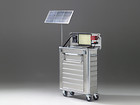
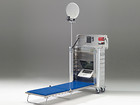
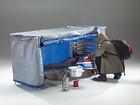

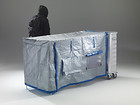
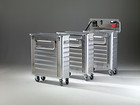
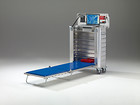
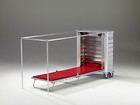
![- Instant Housing Shelter - Year 2007 – WBF 240-Shelter Box
Dimensions: closed 101 x 58 x 69 cm / open 198 x 58 x 102 cm. Material: light metal. Weight: approx. 45 kg / Perm. total weight: 120 kg. Volume: 240 l.
[SERIAL NR.: 401-219-SHL-08JA]](/ib/site/documents/image/media/par283b1580_b4e2_7b75_53cc_3243835dae2a_Thumb3_343b714dadcafb29a153eda08713f361/ba62a6f0-7b1e-541c-cef0-4cff1021106f_ce68aeb6-7820-c2b9-10bf-6f57ec762d03_cntIdImage_28eb3228e0b4e5dfc580cc4e89c23278.jpg?Width=300&Height=105&NoUpscale=0&Quality=90&Sharpen=0&Progr=1&Confirm=1)
![- Instant Housing Shelter - Year 2007 – WBF 240-Shelter Box
Dimensions: closed 101 x 58 x 69 cm / open 198 x 58 x 102 cm. Material: light metal. Weight: approx. 45 kg / Perm. total weight: 120 kg. Volume: 240 l.
[SERIAL NR.: 401-219-SHL-08JA]](/ib/site/documents/image/media/par283b1580_b4e2_7b75_53cc_3243835dae2a_Thumb3_343b714dadcafb29a153eda08713f361/744ce72c-0ff4-041d-87f4-b28f16e97b6a_533c1844-0464-d367-8085-60d72eda2c5d_cntIdImage_28eb3228e0b4e5dfc580cc4e89c23278.jpg?Width=300&Height=105&NoUpscale=0&Quality=90&Sharpen=0&Progr=1&Confirm=1)
![- Instant Housing Shelter - Year 2007 – IH Shelter Klappliege SLK
Dimensions: closed 80 x 87 x 25 cm / open 205 x 87 x 95 cm. Material: steel snap frame, tarpaulin. Weight: 12 kg. / Perm. total weight: 110 kg. Volume: 1500 l.
[Serial Nr.: 409-273-SHL-08JA]](/ib/site/documents/image/media/par283b1580_b4e2_7b75_53cc_3243835dae2a_Thumb3_343b714dadcafb29a153eda08713f361/5c39b436-ebbb-0908-e72e-352cb00700bd_363dcf76-0869-af95-1543-d63e7f979f57_cntIdImage_28eb3228e0b4e5dfc580cc4e89c23278.jpg?Width=300&Height=105&NoUpscale=0&Quality=90&Sharpen=0&Progr=1&Confirm=1)
![- Instant Housing Shelter - Year 2007 – IH Shelter Klappliege SLK
Dimensions: closed 80 x 87 x 25 cm / open 205 x 87 x 95 cm. Material: steel snap frame, tarpaulin. Weight: 12 kg. / Perm. total weight: 110 kg. Volume: 1500 l.
[Serial Nr.: 409-273-SHL-08JA]](/ib/site/documents/image/media/par283b1580_b4e2_7b75_53cc_3243835dae2a_Thumb3_343b714dadcafb29a153eda08713f361/558d1b02-42b3-f3dd-aa01-112db31dca49_d3b048d0-84c9-6602-a1ea-05071a25117b_cntIdImage_28eb3228e0b4e5dfc580cc4e89c23278.jpg?Width=300&Height=105&NoUpscale=0&Quality=90&Sharpen=0&Progr=1&Confirm=1)


































![- Nomadic mobile cooking - Year 2003 – Instant Cooking I-C 1050
Dimensions: 18 5 x 210 x 256 cm / transport dimensions: 128 x 80 x 143 cm. Material: light metal. Lifting capacity: 300 kg. Volume: 1050 l.
[SERIAL NR.: 611-222-COK-02JA]](/ib/site/documents/image/media/par91202a5f_385e_2ba0_afd6_28f8e9032b89_Thumb3_a80506fcbe096b7f8902f3ff3937bd2f/f0d8cdf1-6dd5-3ce3-5e39-64459b83063b_47d8629a-00cd-8a95-8408-0d7d9aaf3ec4_cntIdImage_28eb3228e0b4e5dfc580cc4e89c23278.jpg?Width=300&Height=105&NoUpscale=0&Quality=90&Sharpen=0&Progr=1&Confirm=1)
![- Nomadic mobile cooking - Year 2003 – Instant Cooking I-C 1050
Dimensions: 18 5 x 210 x 256 cm / transport dimensions: 128 x 80 x 143 cm. Material: light metal. Lifting capacity: 300 kg. Volume: 1050 l.
[SERIAL NR.: 611-222-COK-02JA]](/ib/site/documents/image/media/par91202a5f_385e_2ba0_afd6_28f8e9032b89_Thumb3_a80506fcbe096b7f8902f3ff3937bd2f/c80bbfbb-5d48-5474-0bab-ce93864d2c02_762132e0-2785-27b5-7155-62376f312363_cntIdImage_28eb3228e0b4e5dfc580cc4e89c23278.jpg?Width=300&Height=105&NoUpscale=0&Quality=90&Sharpen=0&Progr=1&Confirm=1)
![- Nomadic mobile cooking - Year 2003 – Instant Cooking I-C 1050
Dimensions: 18 5 x 210 x 256 cm / transport dimensions: 128 x 80 x 143 cm. Material: light metal. Lifting capacity: 300 kg. Volume: 1050 l.
[SERIAL NR.: 611-222-COK-02JA]](/ib/site/documents/image/media/par91202a5f_385e_2ba0_afd6_28f8e9032b89_Thumb3_a80506fcbe096b7f8902f3ff3937bd2f/7d16e1a7-cd25-d147-4d37-c0318b488110_00a426ed-03fd-29a0-8c90-58376edd8a87_cntIdImage_28eb3228e0b4e5dfc580cc4e89c23278.jpg?Width=300&Height=105&NoUpscale=0&Quality=90&Sharpen=0&Progr=1&Confirm=1)
![- Nomadic mobile cooking - Year 2003 – Instant Cooking IC-360
Dimensions: 93 x 68 x 219 cm / transport dimensions: 93 x 68 x 99 cm. Material: light metal. Volume 360 l.
[SERIAL NR.: 614-225-COK-02JA]](/ib/site/documents/image/media/par91202a5f_385e_2ba0_afd6_28f8e9032b89_Thumb3_a80506fcbe096b7f8902f3ff3937bd2f/9712e990-6734-6381-8ee2-a0bea9e5d1ed_4ca96262-5af3-ac10-4c88-fc6c54f3692f_cntIdImage_28eb3228e0b4e5dfc580cc4e89c23278.jpg?Width=300&Height=105&NoUpscale=0&Quality=90&Sharpen=0&Progr=1&Confirm=1)
![- Nomadic mobile cooking - Year 2003 – Instant Cooking IC-650
Dimensions: 18 5 x 210 x 256 cm / transport dimensions: 128 x 80 x 143 cm. Material: light metal. Lifting capacity: 300 kg. Volume: 1050 l.[SERIAL NR.: 611-222-COK-02JA]](/ib/site/documents/image/media/par91202a5f_385e_2ba0_afd6_28f8e9032b89_Thumb3_a80506fcbe096b7f8902f3ff3937bd2f/bf9c804e-fa1d-d9c7-6a50-5c9e9dbd11b7_e1f4c3ca-4dee-ed1d-9c3f-b56a01d597ac_cntIdImage_28eb3228e0b4e5dfc580cc4e89c23278.jpg?Width=300&Height=105&NoUpscale=0&Quality=90&Sharpen=0&Progr=1&Confirm=1)
![- Nomadic mobile cooking - Year 2003 – Instant Cooking I-C 1050
Dimensions: 18 5 x 210 x 256 cm / transport dimensions: 128 x 80 x 143 cm. Material: light metal. Lifting capacity: 300 kg. Volume: 1050 l.
[SERIAL NR.: 611-222-COK-02JA]](/ib/site/documents/image/media/par91202a5f_385e_2ba0_afd6_28f8e9032b89_Thumb3_a80506fcbe096b7f8902f3ff3937bd2f/37874c9d-1b0e-402e-b74b-3fad1f1799ce_5957d042-f4e6-b0d9-0450-a6075920b3a0_cntIdImage_28eb3228e0b4e5dfc580cc4e89c23278.jpg?Width=300&Height=105&NoUpscale=0&Quality=90&Sharpen=0&Progr=1&Confirm=1)
![- Nomadic mobile cooking - Year 2003 – Instant Cooking I-C 35
Backpack with isolated double chambers and adjustable flaps. Dimensions: 60 x 35 x 47 cm.
[SERIAL NR.: 616-227-COK-02JA]](/ib/site/documents/image/media/par91202a5f_385e_2ba0_afd6_28f8e9032b89_Thumb3_a80506fcbe096b7f8902f3ff3937bd2f/5239d967-24d9-96fe-ef24-56663493e1b3_c067cbf3-a3cf-c1b6-03e8-dff627bd04c6_cntIdImage_28eb3228e0b4e5dfc580cc4e89c23278.jpg?Width=300&Height=105&NoUpscale=0&Quality=90&Sharpen=0&Progr=1&Confirm=1)
![- Nomadic mobile cooking - Year 2003 – Instant Cooking I-C 15
Nomadic mobile service / Nomadic mobile vendor’s tray. Dimensions: 65 x 42 x 17 cm.
[SERIAL NR.: 617-228-COK-02JA]](/ib/site/documents/image/media/par91202a5f_385e_2ba0_afd6_28f8e9032b89_Thumb3_a80506fcbe096b7f8902f3ff3937bd2f/14e9465c-ae50-ad23-563d-f966beded332_c2500e03-3af0-3769-c626-d175140a0fb5_cntIdImage_28eb3228e0b4e5dfc580cc4e89c23278.jpg?Width=300&Height=105&NoUpscale=0&Quality=90&Sharpen=0&Progr=1&Confirm=1)
![- Nomadic mobile cooking - Year 2003 – Instant Cooking I-C 25
Backpack with insulation, aluminium tank 5l für hot and cold drinks. Dimensions: 30 x 42 x 24 cm.
[SERIAL NR.: 618-229-COK-02JA]](/ib/site/documents/image/media/par91202a5f_385e_2ba0_afd6_28f8e9032b89_Thumb3_a80506fcbe096b7f8902f3ff3937bd2f/f05c38fd-19d3-8405-b85f-03104c5ab08a_a328bd35-839d-8f34-4edc-93ae086df56e_cntIdImage_28eb3228e0b4e5dfc580cc4e89c23278.jpg?Width=300&Height=105&NoUpscale=0&Quality=90&Sharpen=0&Progr=1&Confirm=1)
![- Mobile medical care - Year 2003 – Instant Help FUSION
Dimensions: 198 x 55 x 85 cm / transport dimensions: 101 x 57 x119 cm. Material: light metal. Weight: approx. 40 kg.
[SERIAL NR.: 920-291-HEL-03MA]](/ib/site/documents/image/media/par9bd932ac_59b0_de5e_6323_091578b8b957_Thumb3_66deeee1cd5ceeec594aaece850b8e3d/f778d35b-9064-bb82-d213-3168a84bc279_0dc9afc0-1d65-17e5-e41d-12f9288eaea8_cntIdImage_28eb3228e0b4e5dfc580cc4e89c23278.jpg?Width=300&Height=105&NoUpscale=0&Quality=90&Sharpen=0&Progr=1&Confirm=1)
![- Mobile medical care - Year 2003 – Instant Help DEFIMED
Dimensions: 198 x 55 x 85 cm / transport dimensions: 101 x 57 x119 cm. Material: light metal. Weight: approx. 40 kg.
[SERIAL NR.: 920-291-HEL-03MA]](/ib/site/documents/image/media/par9bd932ac_59b0_de5e_6323_091578b8b957_Thumb3_66deeee1cd5ceeec594aaece850b8e3d/c90db0a6-7899-9da0-d605-ff457fab9416_d78b22ee-b3a5-38b9-b08e-8f495dde546a_cntIdImage_28eb3228e0b4e5dfc580cc4e89c23278.jpg?Width=300&Height=105&NoUpscale=0&Quality=90&Sharpen=0&Progr=1&Confirm=1)
![- Mobile medical care - Year 2003 – Instant Help CENTER MED
Dimensions: 198 x 55 x 85 cm / transport dimensions: 101 x 57 x119 cm. Material: light metal. Weight: approx. 40 kg.
[SERIAL NR.: 920-291-HEL-03MA]](/ib/site/documents/image/media/par9bd932ac_59b0_de5e_6323_091578b8b957_Thumb3_66deeee1cd5ceeec594aaece850b8e3d/151d3725-d059-d989-7684-76542712763b_15abd298-70ad-3312-7268-6630a4d1420f_cntIdImage_28eb3228e0b4e5dfc580cc4e89c23278.jpg?Width=300&Height=105&NoUpscale=0&Quality=90&Sharpen=0&Progr=1&Confirm=1)
![- Mobile medical care - Year 2003 – Instant Help COMBIBAG
Dimensions: 198 x 55 x 85 cm / transport dimensions: 101 x 57 x119 cm. Material: light metal. Weight: approx. 40 kg.
[SERIAL NR.: 920-291-HEL-03MA]](/ib/site/documents/image/media/par9bd932ac_59b0_de5e_6323_091578b8b957_Thumb3_66deeee1cd5ceeec594aaece850b8e3d/4ab1d2db-34a0-1016-dd38-b44368cdadb2_ae8982fa-bcd7-dc47-b255-c4d29939df0b_cntIdImage_28eb3228e0b4e5dfc580cc4e89c23278.jpg?Width=300&Height=105&NoUpscale=0&Quality=90&Sharpen=0&Progr=1&Confirm=1)
![- Mobile medical care - Year 2003 – Instant Help RESCU MED
Dimensions: 198 x 55 x 85 cm / transport dimensions: 101 x 57 x 68 cm. Material: light metal. Weight: approx. 40 kg.
[SERIAL NR.: 920-791-HEL-03MA]](/ib/site/documents/image/media/par9bd932ac_59b0_de5e_6323_091578b8b957_Thumb3_66deeee1cd5ceeec594aaece850b8e3d/0800eb1f-1767-6eaa-7837-973e2a492832_2710d389-46e3-048c-e6d1-d805baf80944_cntIdImage_28eb3228e0b4e5dfc580cc4e89c23278.jpg?Width=300&Height=105&NoUpscale=0&Quality=90&Sharpen=0&Progr=1&Confirm=1)
![- Mobile medical care - Year 2003 – Instant Help PENSION
Dimensions: 198 x 55 x 85 cm / transport dimensions: 101 x 57 x 119 cm. Material: light metal. Weight: approx. 40 kg.
[SERIAL NR.: 920-342-HEL-03MA]](/ib/site/documents/image/media/par9bd932ac_59b0_de5e_6323_091578b8b957_Thumb3_66deeee1cd5ceeec594aaece850b8e3d/653ee25d-980f-4341-d199-53dbc4aca6f1_25f6df42-d146-f349-127d-16fbf62e52cc_cntIdImage_28eb3228e0b4e5dfc580cc4e89c23278.jpg?Width=300&Height=105&NoUpscale=0&Quality=90&Sharpen=0&Progr=1&Confirm=1)
![- Mobile medical care - Year 2003 – Instant Help STANDARD
Dimensions: 198 x 55 x 85 cm / transport dimensions: 101 x 57 X 68 cm. Material: light metal. Weight: approx. 40 kg.
[SERIAL NR.: 920-372-HEL-03MA]](/ib/site/documents/image/media/par9bd932ac_59b0_de5e_6323_091578b8b957_Thumb3_66deeee1cd5ceeec594aaece850b8e3d/af51690b-9ee9-2cb1-29c0-2e041e44012f_335473ff-d55d-1993-4a4e-98290a76240d_cntIdImage_28eb3228e0b4e5dfc580cc4e89c23278.jpg?Width=300&Height=105&NoUpscale=0&Quality=90&Sharpen=0&Progr=1&Confirm=1)
![- Mobile medical care - Year 2003 – Instant Help CARE
Dimensions: 198 x 55 x 85 cm / transport dimensions: 101 x 57 X 72 cm. Material: light metal. Weight: approx. 40 kg.
[SERIAL NR.: 920-567-HEL-03MA]](/ib/site/documents/image/media/par9bd932ac_59b0_de5e_6323_091578b8b957_Thumb3_66deeee1cd5ceeec594aaece850b8e3d/972677ff-552b-a9e2-cb35-394537027bdf_262a8eae-3c71-cd8e-d50d-2c1ef595a00a_cntIdImage_28eb3228e0b4e5dfc580cc4e89c23278.jpg?Width=300&Height=105&NoUpscale=0&Quality=90&Sharpen=0&Progr=1&Confirm=1)








































![- Instant Housing Straßenkreuzer - Year 2010 – IH Road Cruiser GS
Equipment: folding table, compartments, padded seating, First aid kit, mirror, whistle, multitool, torch. Dimensions: 40 x 50 x 90 cm. Material: steel frame, aluminium, rubber tyres. Weight: 14 kg. / Perm. total weight: 95 kg. Volume: 42 l.
[Serial Nr.: 408-191-HOU-10FB]](/ib/site/documents/image/media/par1227a383_7342_8d39_0596_070bfb6e6d27_Thumb3_b379160e98f61335aee7ee8716363621/93245845-61e9-e1e5-c312-b28c64c1f97f_7e625e73-d291-1e72-745e-a334a9f587f0_cntIdImage_28eb3228e0b4e5dfc580cc4e89c23278.jpg?Width=300&Height=105&NoUpscale=0&Quality=90&Sharpen=0&Progr=1&Confirm=1)
![- Instant Housing Straßenkreuzer - Year 2010 – IH Road Cruiser GS
Equipment: folding table, compartments, padded seating, First aid kit, mirror, whistle, multitool, torch. Dimensions: 40 x 50 x 90 cm. Material: steel frame, aluminium, rubber tyres. Weight: 14 kg. / Perm. total weight: 95 kg. Volume: 42 l.
[Serial Nr.: 408-191-HOU-10FB]](/ib/site/documents/image/media/par1227a383_7342_8d39_0596_070bfb6e6d27_Thumb3_b379160e98f61335aee7ee8716363621/88bd2fab-97ab-158f-6dea-6d3a936fb9c2_99dd8171-a3e6-99b7-5887-e4e7081248c9_cntIdImage_28eb3228e0b4e5dfc580cc4e89c23278.jpg?Width=300&Height=105&NoUpscale=0&Quality=90&Sharpen=0&Progr=1&Confirm=1)
![- Instant Housing Straßenkreuzer - Year 2010 – IH Road Cruiser GS
Equipment: folding table, compartments, padded seating, First aid kit, mirror, whistle, multitool, torch. Dimensions: 40 x 50 x 90 cm. Material: steel frame, aluminium, rubber tyres. Weight: 14 kg. / Perm. total weight: 95 kg. Volume: 42 l.
[Serial Nr.: 408-191-HOU-10FB]](/ib/site/documents/image/media/par1227a383_7342_8d39_0596_070bfb6e6d27_Thumb3_b379160e98f61335aee7ee8716363621/b0bde613-4662-807f-3751-18e3d1f93bb0_943b0c65-5ac7-cc45-651d-67a2639604d9_cntIdImage_28eb3228e0b4e5dfc580cc4e89c23278.jpg?Width=300&Height=105&NoUpscale=0&Quality=90&Sharpen=0&Progr=1&Confirm=1)
![- Instant Housing Straßenkreuzer - Year 2010 – IH Road Cruiser GS
Equipment: folding table, compartments, padded seating, First aid kit, mirror, whistle, multitool, torch. Dimensions: 40 x 50 x 90 cm. Material: steel frame, aluminium, rubber tyres. Weight: 14 kg. / Perm. total weight: 95 kg. Volume: 42 l.
[Serial Nr.: 408-191-HOU-10FB]](/ib/site/documents/image/media/par1227a383_7342_8d39_0596_070bfb6e6d27_Thumb3_b379160e98f61335aee7ee8716363621/cb5fa3ac-11b4-83ad-ae56-74f41c357417_4bb5c001-901d-aa4e-1ba8-94a7f614c50a_cntIdImage_28eb3228e0b4e5dfc580cc4e89c23278.jpg?Width=300&Height=105&NoUpscale=0&Quality=90&Sharpen=0&Progr=1&Confirm=1)
![- Fußbad für alle - Year 2004 – FB-34 Hockerbecken
Equipment: Relaxing footbath with essential oils and mineral salts, terry towel.
Dimensions: closed 42 x 42 x 15 cm / open 80 x 42 x 15 cm. Material: Schwerter enamel, wood, aluminium. Weight: 3 kg.
[Serial Nr.: 307-623-FUB-04AG]](/ib/site/documents/image/media/parac3c9505_77b5_1aa2_f888_98ad288db8e0_Thumb3_f6bf033fcafaac4e9d74285d3e1752f5/337608cc-a773-6232-62ff-3320d35ea8a2_55f61787-3462-7778-3f44-37f3558958d0_cntIdImage_28eb3228e0b4e5dfc580cc4e89c23278.jpg?Width=300&Height=105&NoUpscale=0&Quality=90&Sharpen=0&Progr=1&Confirm=1)
![- Fußbad für alle - Year 2004 – FB-34 Hockerbecken
Equipment: Relaxing footbath with essential oils and mineral salts, terry towel.
Dimensions: closed 42 x 42 x 15 cm / open 80 x 42 x 15 cm. Material: Schwerter enamel, wood, aluminium. Weight: 3 kg.
[Serial Nr.: 307-623-FUB-04AG]](/ib/site/documents/image/media/parac3c9505_77b5_1aa2_f888_98ad288db8e0_Thumb3_f6bf033fcafaac4e9d74285d3e1752f5/d5aee083-d53e-8421-e5eb-f0902ff6d8d4_dac54076-cd6c-6129-a077-89d7792f6fe6_cntIdImage_28eb3228e0b4e5dfc580cc4e89c23278.jpg?Width=300&Height=105&NoUpscale=0&Quality=90&Sharpen=0&Progr=1&Confirm=1)
![- Fußbad für alle - Year 2004 – FB-34 Hockerbecken
Equipment: Relaxing footbath with essential oils and mineral salts, terry towel.
Dimensions: closed 42 x 42 x 15 cm / open 80 x 42 x 15 cm. Material: Schwerter enamel, wood, aluminium. Weight: 3 kg.
[Serial Nr.: 307-623-FUB-04AG]](/ib/site/documents/image/media/parac3c9505_77b5_1aa2_f888_98ad288db8e0_Thumb3_f6bf033fcafaac4e9d74285d3e1752f5/2fbf0ad3-5a10-03f7-6476-216c78cba805_7efebef8-1c57-b374-0a3f-e9ba9ccafb7b_cntIdImage_28eb3228e0b4e5dfc580cc4e89c23278.jpg?Width=300&Height=105&NoUpscale=0&Quality=90&Sharpen=0&Progr=1&Confirm=1)
![- Fußbad für alle - Year 2004 – FB Biskaya-Set
Equipment: Breton fleur de sel, 5 towls Gruben, 5 basins FB-34, 5 folding chairs, transportation box.
Dimensions: closed 42 x 42 x 15 cm / open. Material: Schwerter enamel, wood, aluminium. Weight: 3 kg.
[Serial Nr.: 308-432-FUB-04AG]](/ib/site/documents/image/media/parac3c9505_77b5_1aa2_f888_98ad288db8e0_Thumb3_f6bf033fcafaac4e9d74285d3e1752f5/ae0c53d3-15f1-b314-707b-8b7540966265_be0061be-2153-4401-9ad2-9f2a9617eb39_cntIdImage_28eb3228e0b4e5dfc580cc4e89c23278.jpg?Width=300&Height=105&NoUpscale=0&Quality=90&Sharpen=0&Progr=1&Confirm=1)
![- Fußbad für alle - Year 2004 – FB Eco Trailer
Dimensions: closed 160 x 155 x 150 cm / open 250 x 155 x 150 cm. Material: steel frame construction. Weight: Perm. total weight: 750 kg.
[Serial Nr.: 309-621-FUB-12MA]](/ib/site/documents/image/media/parac3c9505_77b5_1aa2_f888_98ad288db8e0_Thumb3_f6bf033fcafaac4e9d74285d3e1752f5/f2f51e6f-395b-2738-85b0-0dfa541cf78b_49efd4ab-69e4-c56f-8be7-e4faeb46863e_cntIdImage_28eb3228e0b4e5dfc580cc4e89c23278.jpg?Width=300&Height=105&NoUpscale=0&Quality=90&Sharpen=0&Progr=1&Confirm=1)
![- Fußbad für alle - Year 2004 – FB Massada-Set
Equipment: Dead Sea salt, 5 terry towel, 5 basins FB-34, 5 stool seats, transportation box.
Dimensions: closed 42 x 42 x 15 cm / open. Material: Schwerter enamel, wood, aluminium. Weight: 3 kg.
[Serial Nr.: 305-122-FUB-04AG]](/ib/site/documents/image/media/parac3c9505_77b5_1aa2_f888_98ad288db8e0_Thumb3_f6bf033fcafaac4e9d74285d3e1752f5/ace2d2d0-6eb8-9cda-cda9-273b968b3f7f_61797181-b926-bb55-e6ca-d7ccc4f30fe2_cntIdImage_28eb3228e0b4e5dfc580cc4e89c23278.jpg?Width=300&Height=105&NoUpscale=0&Quality=90&Sharpen=0&Progr=1&Confirm=1)
![- Fußbad für alle - Year 2004 – FB Lahore-Set
Equipment: Himalaya salt from Pakistan, 5 towels Gruben, 5 basins FB-34, 5 stool seats, transportation box.
Dimensions: closed 42 x 42 x 15 cm / open. Material: Schwerter enamel, wood, aluminium. Weight: 3 kg.
[Serial Nr.: 306-112-FUB-04AG]](/ib/site/documents/image/media/parac3c9505_77b5_1aa2_f888_98ad288db8e0_Thumb3_f6bf033fcafaac4e9d74285d3e1752f5/ecc4d175-da21-29a9-5cb6-6d7872a742e1_82246a5a-555f-e108-3d19-337d24c0f4c8_cntIdImage_28eb3228e0b4e5dfc580cc4e89c23278.jpg?Width=300&Height=105&NoUpscale=0&Quality=90&Sharpen=0&Progr=1&Confirm=1)
![- Fußbad für alle - Year 2004 – FB Massada-Set
Equipment: Dead Sea salt, 5 terry towel, 5 basins FB-34, 5 stool seats, transportation box.
Dimensions: closed 42 x 42 x 15 cm / open. Material: Schwerter enamel, wood, aluminium. Weight: 3 kg.
[Serial Nr.: 305-122-FUB-04AG]](/ib/site/documents/image/media/parac3c9505_77b5_1aa2_f888_98ad288db8e0_Thumb3_f6bf033fcafaac4e9d74285d3e1752f5/70214ce1-5189-e77f-e7e2-eee0f7be93af_82562948-9fdb-8c80-56d7-f89e8e42274e_cntIdImage_28eb3228e0b4e5dfc580cc4e89c23278.jpg?Width=300&Height=105&NoUpscale=0&Quality=90&Sharpen=0&Progr=1&Confirm=1)
![- Fußbad für alle - Year 2004 – FB Massada-Set
Equipment: Dead Sea salt, 5 terry towel, 5 basins FB-34, 5 stool seats, transportation box.
Dimensions: closed 42 x 42 x 15 cm / open. Material: Schwerter enamel, wood, aluminium. Weight: 3 kg.
[Serial Nr.: 305-122-FUB-04AG]](/ib/site/documents/image/media/parac3c9505_77b5_1aa2_f888_98ad288db8e0_Thumb3_f6bf033fcafaac4e9d74285d3e1752f5/c67fcabc-e162-8eab-b52c-dd28199f294d_1819705b-2159-b342-6572-954d1454ccc5_cntIdImage_28eb3228e0b4e5dfc580cc4e89c23278.jpg?Width=300&Height=105&NoUpscale=0&Quality=90&Sharpen=0&Progr=1&Confirm=1)
![- Fußbad für alle - Year 2004 – FB Eco Trailer
Dimensions: closed 160 x 155 x 150 cm / open 250 x 155 x 150 cm. Material: steel frame construction. Weight: Perm. total weight: 750 kg.
[Serial Nr.: 309-621-FUB-12MA]](/ib/site/documents/image/media/parac3c9505_77b5_1aa2_f888_98ad288db8e0_Thumb3_f6bf033fcafaac4e9d74285d3e1752f5/b84b8b0e-fa2b-ae9c-dbfc-8815830ba330_b3b609f6-853e-f0d0-a6d0-98250ec6651c_cntIdImage_28eb3228e0b4e5dfc580cc4e89c23278.jpg?Width=300&Height=105&NoUpscale=0&Quality=90&Sharpen=0&Progr=1&Confirm=1)
![- Fußbad für alle - Year 2004 – FB-34 Mondeo
Equipment: Special case, Relaxing footbath with essential oils and mineral salts, terry towel.
Dimensions: closed 42 x 42 x 15 cm / open 80 x 42 x 15 cm. Material: Schwerter enamel, wood, filler, aluminium. Weight: 3,5 kg.
[Serial Nr.: 301-663-FUB-04AG]](/ib/site/documents/image/media/parac3c9505_77b5_1aa2_f888_98ad288db8e0_Thumb3_f6bf033fcafaac4e9d74285d3e1752f5/8925d4f0-03ca-665f-a644-ff9aa43dcca9_9371f3b6-cec6-97df-cf41-cfefbcbe81bd_cntIdImage_28eb3228e0b4e5dfc580cc4e89c23278.jpg?Width=300&Height=105&NoUpscale=0&Quality=90&Sharpen=0&Progr=1&Confirm=1)






